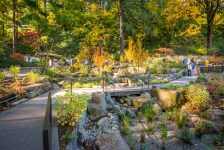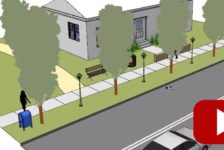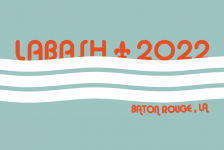Design for Healing Spaces. Therapeutic Gardens, by Daniel Winterbottom and Amy Wagenfeld. Modern societies grow further and further away from nature. People tend to interact less and less with each other, instead spending their time locked in safe apartments and houses in front of their computer screens. At the same time, our old problems — sickness, disability, trauma, and loneliness — persist, while others, such as obesity, seem to become more common. We need to try to help the less fortunate among us – the sick, the lonely, the outcasts … the list goes on. Nature — particularly gardens — is a wonderful therapeutic tool for helping a variety of different people with a whole array of problems. Working, playing, or just spending time among plants has been proven to help adults and children alike. “Design for Healing Spaces.
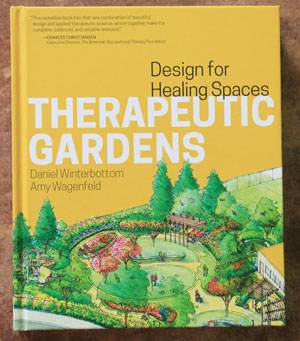
Front cover of Design for Healing Spaces. Therapeutic Gardens. Photo credit: Marta Ratajszczak
Design for Healing Spaces. Therapeutic Gardens
Overview
The book is divided into eight informative chapters, each devoted to a separate problem. The first two parts deal with the ideology of healing spaces and the way the design process should be approached. The middle five chapters extensively describe five different types of therapeutic gardens, while the final chapter deals with maintenance issues. Each of the chapters is based on real-life examples, which help the reader to achieve deeper understanding of the problem at hand and relate to it in a more meaningful manner. MULTIPLE DRAWINGS, SKETCHES, AND PICTURES (242 color photos and 34 drawings!) add greatly to the value of the book. Numerous designs on various stages of the process can serve as a source of knowledge and inspiration for the reader. Every chapter is accompanied by several interesting and relevant case studies. Each of the chapters from 2 to 7 also includes essential information on the group of users, design considerations, and a personal statement from a garden’s user.
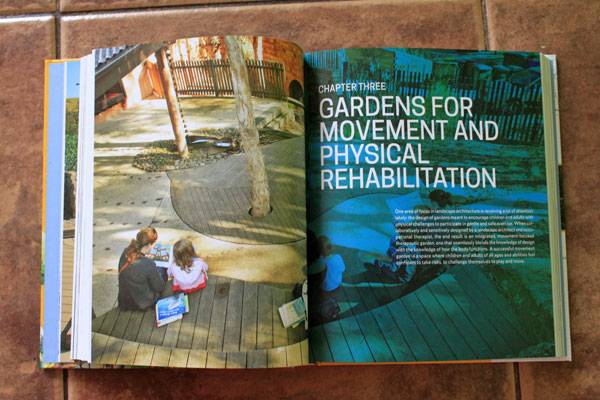
Inside Design for Healing Spaces. Therapeutic Gardens. Photo credit: Marta Ratajszczak
A Practical Guide to Designing Healing Gardens
After briefly outlining the history and theory behind healing gardens, the authors move on to more practical issues. The second chapter of the book deals with the design process, from the understanding of goals through site assessment to paths, plants, lighting, and other materials. The authors stress the value of participatory design – designing the garden in cooperation with its future users. The consecutive chapters describe a variety of therapeutic spaces for different groups of users and multiple purposes. The authors detail how to design healing spaces for people with restricted mobility; people experiencing loss, trauma, or marginalization; the homeless; the sick; prison inmates; people with dementia, AIDS, and cancer; post traumatic stress disorder sufferers; and many more.
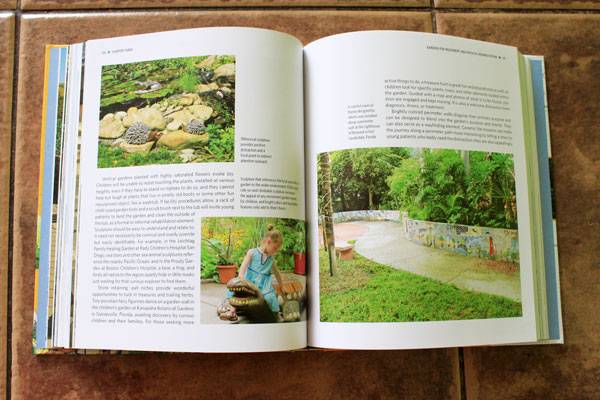
Inside Design for Healing Spaces. Therapeutic Gardens. Photo credit: Marta Ratajszczak
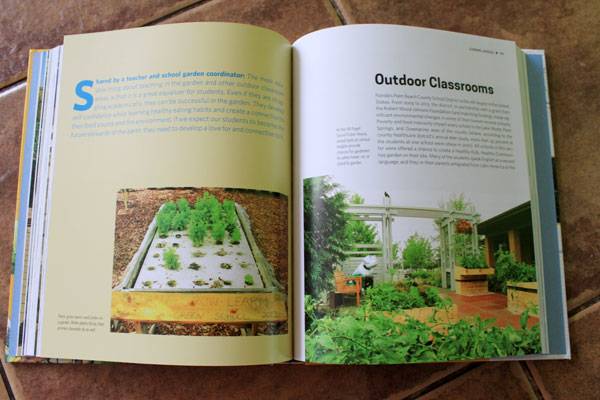
Design for Healing Spaces. Therapeutic Gardens. Photo credit: Marta Ratajszczak
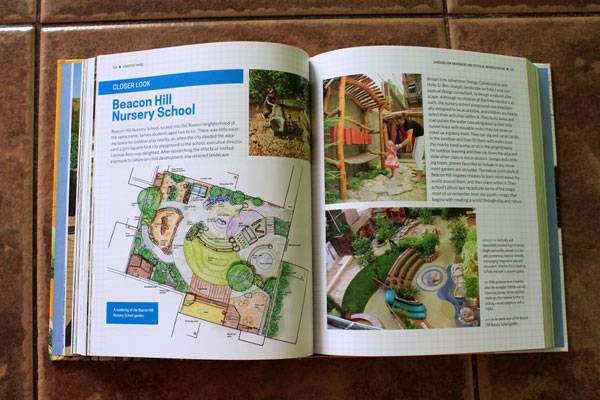
Design for Healing Spaces. Therapeutic Gardens. Photo credit: Marta Ratajszczak
Is it for Me?
The book offers a unique blend of views and attitudes, thanks to it being written by a landscape architect, Daniel Winterbottom, and an occupational therapist, Amy Wagenfeld. The book’s layout, variety of illustrations, and case studies make it an interesting and informative handbook, a comprehensive guide for designers, landscape architects, and health-care providers.
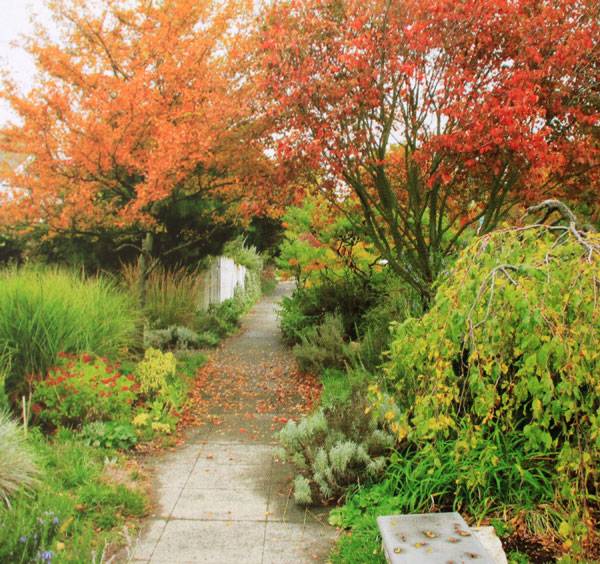
Image from the book Design for Healing Spaces. Therapeutic Gardens. Photo credit: Marta Ratajszczak
- Landscape and Urban Design for Health and Well-Being
- Digital Drawing for Landscape Architecture
- 10 Books to Read in Your Fourth Year of Landscape Architecture
Pick up your copy of Design for Healing Spaces. Therapeutic Gardens today!
Review by Marta Ratajszczak Return to Homepage
Published in Blog





